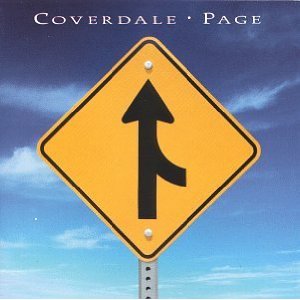As I noted in a recent post, I frequently judge my records by their covers. Perhaps not as much after I have played them through but I have certainly purchased many albums based solely on their artwork alone. In fact, one of my favorite things to do while listening a record is to browse through other albums, enjoying the sleeve desgins.
There are many books and lists of acknowledged classics. I won't downplay works of art like Led Zeppelin I, Sticky Fingers, Who's Next, Sgt. Pepper's or anything by Pink Floyd. These are as good as their reputation and deserve their iconic status. I do have quite a few second-tier favorites, though, that catch my eye as much as my ear:
BulletBoys - BulletBoys - 1988
The photo gracing the cover of the BulletBoys' 1988 debut is a 1964 high-speed shot by Dr. Harold Edgerton. I later learned to appreciate this MIT professor's contributions to photography but in 1988 this simply communicated speed, danger, penetration, destruction - everything I wanted at the time and exactly what this better-than-average hair metal crew delivered.
Rabbit Fur Coat - Jenny Lewis with the Watson Twins - 2006
I bought this record unheard as soon as I saw it, not knowing anything about the artists whatsoever. I don't know exactly what it was that drew me to this but it was immediate. The symmetry of the Watson Twins, to be sure, with Ms. Lewis in red front and center. There's no glamour nor immediate sexuality per se, but there is something undeniably attractive about this sleeve. And, somehow, it communicates exactly the sound of the music within. Smart, spare alt-country that still manages to be beautiful, accessible music.
Lumpy Gravy - Frank Zappa - 1968
I like a lot of Zappa's artwork. I dislike a lot of it, too. Lumpy Gravy works well for me as you get a stark shot of Frank in an odd perspective and more typographical information than the average rock record but nothing that overwhelms the image. Zappa's covers, like his albums, were often busy, sometimes overly so in the early Mothers of Invention era. Lumpy Gravy balances well and I also like its circular self-reference on the reverse which asks "Is this phase 2 of We're Only in It for the Money?" (the 1968 Mothers of Invention release which, in turn, asked "Is this phase one of Lumpy Gravy?")
Coverdale•Page - Coverdale•Page - 1993
This one is already dated and has a definite pre-Nevermind aesthetic - and, coming a couple years after grunge deconstructed rock as we knew it, one can see why this seemed wrong for the times. That said, I love the record, love the pairing (a lot more than what we got on Walking Into Clarksdale when Jimmy Page finally recorded some new material with that other guy). I love the potential branding created with this simple, pre-existing image. Two into one. Directional and direct. I liked the Presence-type placement of the sign on the inside of the CD booklet as well, even if Page's other band had done it before (and, admittedly, more successfully).
Flush the Fashion - Alice Cooper - 1980 and Zipper Catches Skin - Alice Cooper - 1982
Cooper made a definite shift in style in 1980. He lost the makeup and rode the new wave, as exemplified by the superb single, "Clones (We're All)." I love the starkness, the announcement that this is Alice Cooper in 1980, the flash of red. A photo on the rear shows Cooper as angry, plainfaced and all the more terrifying.
Zipper Catches Skin, two albums later, repeats the exact same aesthetic (and even more of a departure from his established norm, musically). It's not quite as effective, having been seen before, but is still a favorite and I like the incorporation of the album's lyrical content as art with the title both in and underlined with a smear of cringe-inducing red.
Difficult to Cure - Rainbow - 1981
This was another that made a big, big impression before I ever heard a note of the band's music. I recall seeing this album long before I ever picked up a Rainbow record and it was one of the last of theirs I actually purchased and listened to. It conveys a menace much darker than what is actually contained within, unfortunately. Faced with a wall of sinister physicians (who scare many people anyway), masked and preparing to do God knows what to you, the listener's mind opens up to so many possibilities that, combined with the right musical content, could have been an all-time classic. This is a great Hipgnosis cover shot that was passed over by Black Sabbath for their 1978 offering, Never Say Die, the content of which also fell short of its own mysterious cover art.
Animal Magnetism - Scorpions - 1980
OK - this is it - my all-time favorite. Not my favorite album but easily my favorite cover. The Scorpions got it wrong over and over (Virgin Killers, anyone?) but they got it oh-so-right on Animal Magnetism. This is another Hipgnosis classic whose individual elements are perfectly benign but combined in such a way to convey everything sexy, dark and dangerous about rock and roll. God only knows what she's thinking, he has a beer and how the heck is the dog involved? Designer Storm Thorgerson said "I don't think we figured it out... We just knew there was something rude somewhere." He was exactly right.









WHAT?
ReplyDeleteNo Rainbow rising or Dark side of the moon?
Rainbow Rising is indeed a classic. For some reason, though, Difficult to Cure was the one that got the band stuck in my head to begin with. Floyd are great, as well and I tried to exempt them in favor of lesser-acknowledged sleeves, though, oddly, I do not care for DSOTM nearly as much as Meddle, Atom Heart Mother or Ummagumma.
ReplyDeleteOh and throw in Iron Butterfly's Inagadadavida.......hope I spelt that right........
ReplyDelete